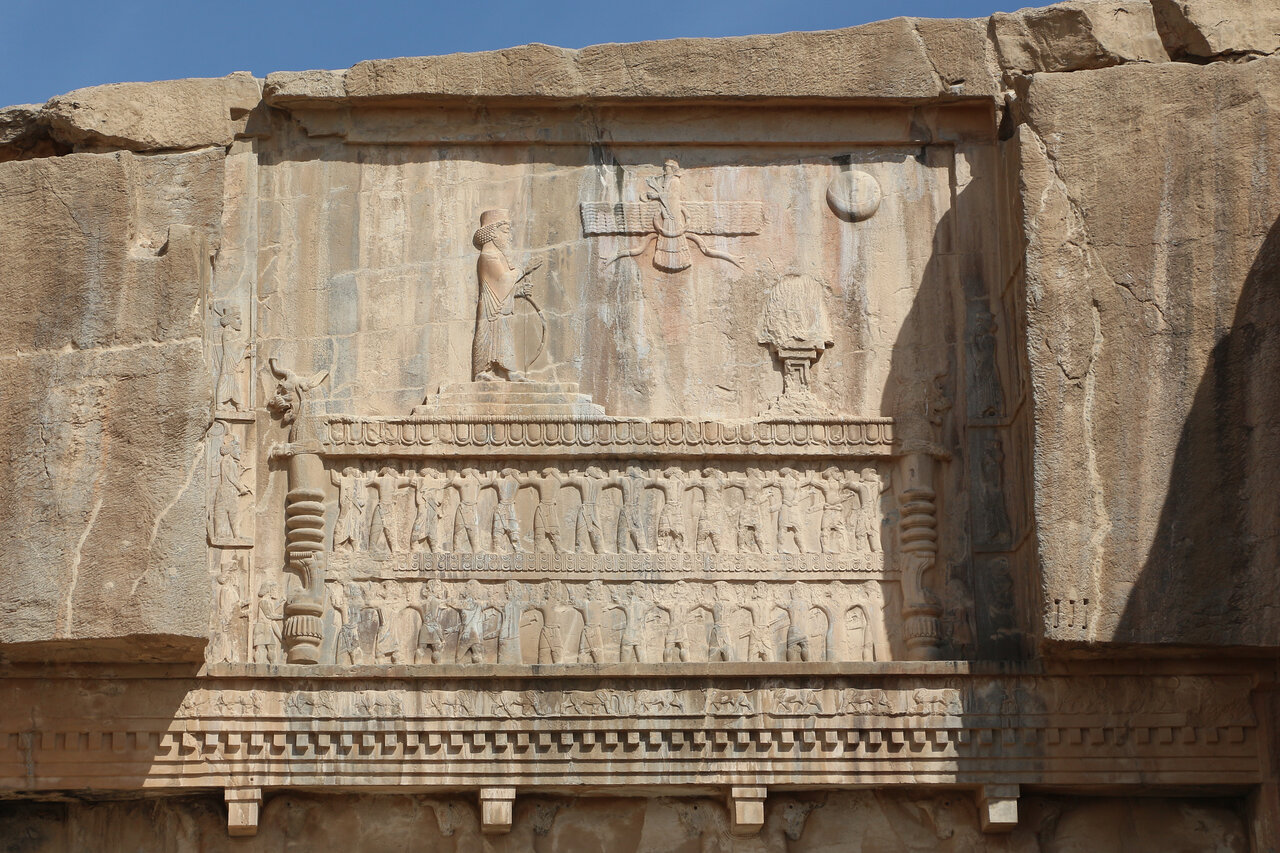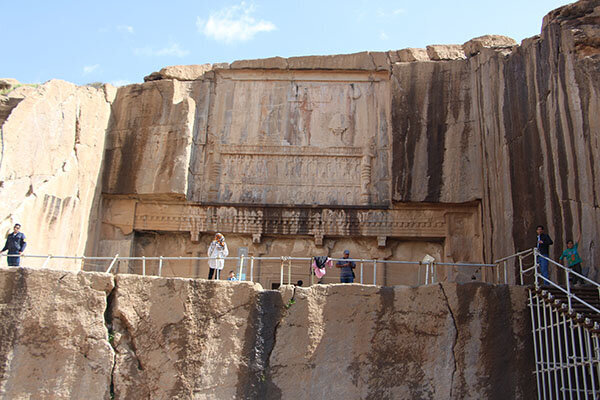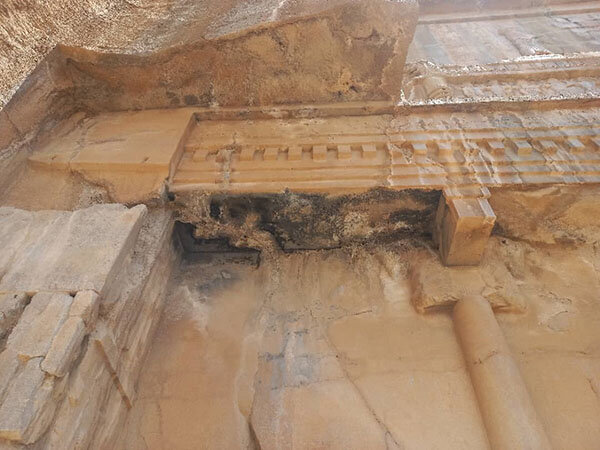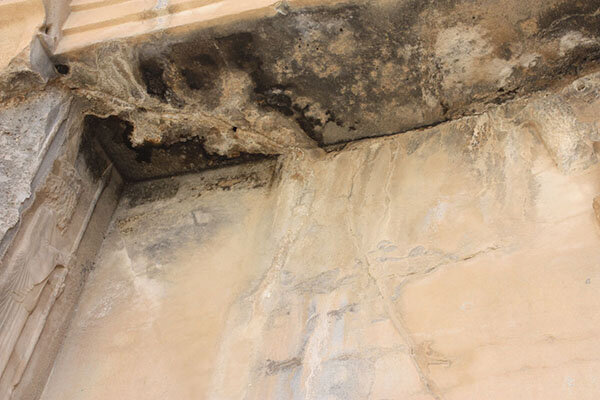Moisture threatens rock-hewn tomb of Artaxerxes III in Persepolis

TEHRAN – The rock-carved tomb of Artaxerxes III, located within the UNESCO World Heritage site of Persepolis, is facing a serious threat due to water damage, according to cultural heritage activist Siavash Arya.
Arya has reported that extensive moisture and dampness have infiltrated the tomb of the Achaemenid king, which is carved into the Kuh-e Rahmat mountain, ISNA reported on Friday.
Sharing photographs of the damaged tomb, Arya explained that the treasured structure has been compromised by the “accumulation of moisture”, particularly following recent spring rains.
“Severe dampness has penetrated the tomb, damaging its stone carvings and causing new challenges for its preservation,” Arya said, noting that this is not the first instance of such issues.
A similar problem was reported in 2020, and, despite promises of restoration from the site’s management at the time, the issue appears unresolved.
Elsewhere in his remarks, Arya stressed the necessity of continuous monitoring and maintenance of the World Heritage site, suggesting that targeted archaeological studies and restoration programs be resumed to avoid further deterioration. He argued that such a significant site is not the place for “trial and error,” and must be managed with skill and vigilance.

According to Arya, one of the primary challenges in preserving stone monuments like the Tomb of Artaxerxes III is the damage caused by acid rain and other natural factors, which significantly impact these historical structures.
He emphasized that protecting these stone relics has become an increasingly costly endeavor in Iran, and despite budget constraints, urgent action is needed to prevent further degradation of such irreplaceable cultural assets.
Highlighting the importance of using modern technology for preservation efforts, Arya urged the adoption of more effective, science-based methods to safeguard these monuments. “In today’s world, failing to maintain and protect historical monuments is both astonishing and unacceptable.”
He added: “We must employ advanced technologies to ensure these invaluable historical sites are preserved for future generations.”
Arya concluded by emphasizing the critical importance of timely intervention, stating that proper climate control and removal of harmful growth, such as lichen, could still save the tomb from further damage. He called for a renewed focus on preservation and a more proactive approach to managing this invaluable heritage site.

Artaxerxes III, also known as Ochus, ruled the Achaemenid Empire from 359/58 to 338 BC, and his tomb is an integral part of the historical legacy of Persepolis, reflecting the grandeur of the ancient Persian civilization.
There are six finished Achaemenid royal tombs. Four of them have been discovered at the nearby Naqsh-e Rustam and two at Persepolis. The four at Naqsh-e Rustam belong to Darius I the Great, Xerxes, Artaxerxes I, and Darius II. The Persepolis tombs, which appear to be younger, must belong to the next two kings, Artaxerxes II (r.404-358) and Artaxerxes III (r.358-338).
Persepolis, whose magnificent ruins rest at the foot of Kuh-e Rahmat (Mountain of Mercy), was the ceremonial capital of the Achaemenid Empire.
Also known as Takht-e Jamshid, Persepolis ranks among the archaeological sites which have no equivalent, considering its unique architecture, urban planning, construction technology, and art. Majestic approaches, monumental stairways, throne and reception rooms, and dependencies have made that 13-ha ensemble one of the world’s greatest archaeological sites.

Construction of its immense terrace was begun about 518 BC by Darius the Great, the Achaemenid Empire’s king. On this terrace, successive kings erected a series of architecturally stunning palatial buildings, among them the massive Apadana palace and the Throne Hall (“Hundred-Column Hall”). The terrace is a grandiose architectural creation, with its double flight of access stairs, walls covered by sculpted friezes at various levels, monumental gateways, gigantic sculpted winged bulls, and remains of large halls.
By carefully engineering lighter roofs and using wooden lintels, the Achaemenid architects were able to use a minimal number of astonishingly slender columns to support open-area roofs. Columns were topped with elaborate capitals; typical was the double-bull capital where, resting on double volutes, the forequarters of two kneeling bulls, placed back-to-back, extended their coupled necks and their twin heads directly under the intersections of the beams of the ceiling.
Narratives say that Persepolis was burnt by Alexander the Great in 330 BC apparently as revenge against the Persians, because it seems the Persian King Xerxes had burnt the Greek City of Athens around 150 years earlier.
AM
